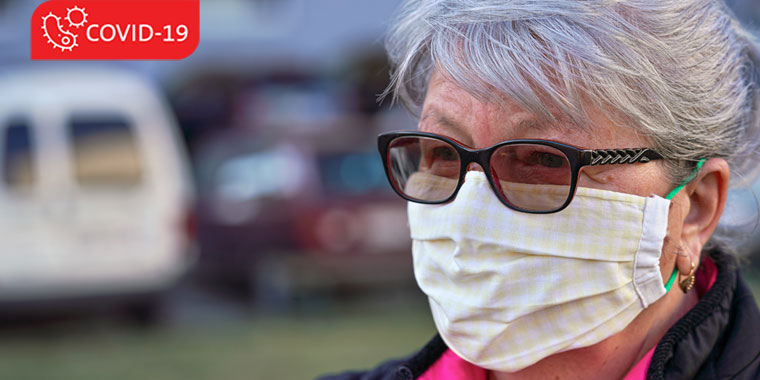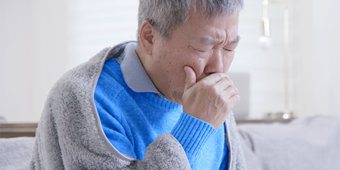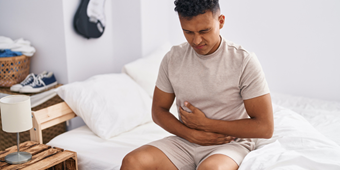The Why And Hows Of Wearing a Face Mask

Answer a few questions and we'll provide you with a list of primary care providers that best fit your needs.
Ohio Gov. Mike DeWine and the Centers for Disease Control and Prevention (CDC) highly recommend that you wear a cloth face covering when you leave your home and go out in public.
Why?
Even if you’re feeling fine and have no symptoms, you could be carrying the novel coronavirus that causes COVID-19, unknowingly spreading it to others. When you put on a cloth face covering or mask, you create a barrier that reduces the risk of that happening.
And you can increase the effectiveness of wearing a face mask by following a few tips that Steven Burdette, MD, Medical Director of Infection Prevention at Miami Valley Hospital, provided Premier Health Now.
Dr. Steven Burdette demonstrates how to handle and wear a cloth face covering. Click play to watch the video.
“You really should never touch your mask – either putting it on or taking it off – until you’ve done hand hygiene,” he says. That is, either wash your hands with soap and water for at least 20 seconds or clean your hands with alcohol-based sanitizer containing more than 62 percent ethanol.
Second, he advises, make sure your mask covers your nose and mouth to more effectively reduce transmission of the virus to others. And when donning your mask, grasp it by the strap or outer edges to minimize your contact with the mask and reduce the risk of contaminating it.
Once you’re wearing the mask, resist the temptation to touch it. “We’re not used to having things on our face. When we put masks on, we’re constantly touching. You really need to be cognizant not to do that.”
But, Dr. Burdette adds, if you need to adjust your mask, wash your hands first. “Anytime you touch your mask, you need to find a way to get your hands clean.”
As soon as you take off your mask, Dr. Burdette says, place it in a paper bag, large envelope, or box to prevent the mask from contaminating surfaces in your home or work area. Don’t use a plastic bag, because that can build up moisture.
One more word of advice from Dr. Burdette: If you’ve been wearing a mask near someone infected with COVID-19 who is not wearing a mask, the outside of your mask will be contaminated. That’s why proper handling — including handwashing – is important when taking your mask off and putting it away.
“If you don’t handle your mask properly, you could infect your hands and then you could infect yourself when you touch your eyes, touch your nose, touch your mouth, eat your hamburger….”
He adds, “Masks can be helpful. Masks can help keep you safe. But they can also put you at some risk (if you don’t handle them properly). So, when you’re dealing with your mask, please do it the right way – do it with hand hygiene.”
And here’s more advice about face masks from the CDC:
Wear reusable cloth masks to reserve surgical masks and N-95 respirators for health care workers and other medical first responders.
Do not place face coverings on children under age 2 or anyone who has difficulty breathing or is unconscious, incapacitated, or otherwise unable to remove the mask without assistance.
Wear face masks in places where maintaining the recommended distance of at least six feet can be difficult. For instance, supermarkets and pharmacies and other businesses that have or will soon be reopening. And wear face masks outdoors if you’ll be in close proximity to other people. In your own backyard – or inside your house – you don’t need to wear a face covering.
Masks worn frequently should be laundered daily. Masks worn sparingly should be laundered every two or three days.
Answer a few questions and we'll provide you with a list of primary care providers that best fit your needs.
Source: Steven Burdette, MD, Medical Director of Infection Prevention, Miami Valley Hospital; Centers for Disease Control and Prevention






